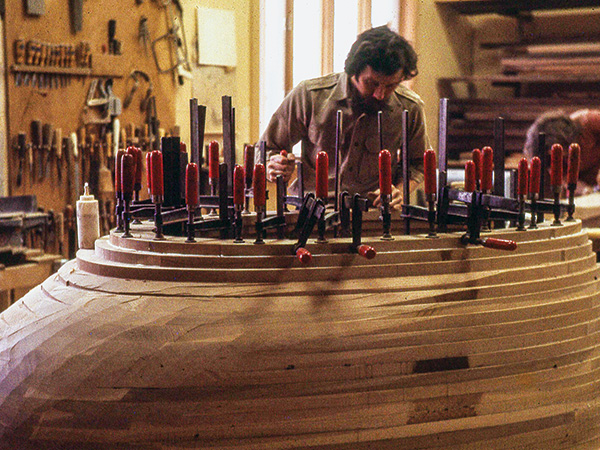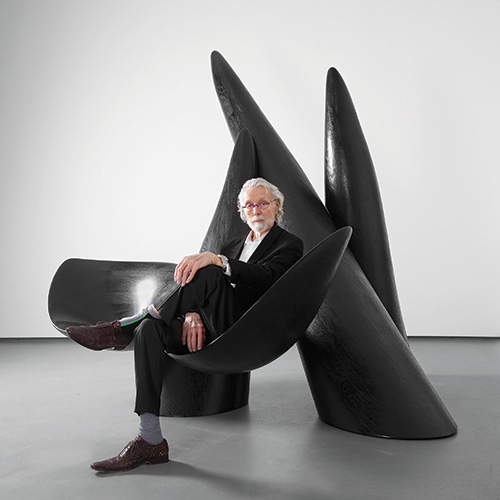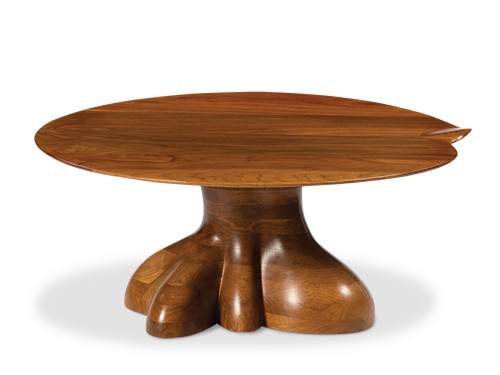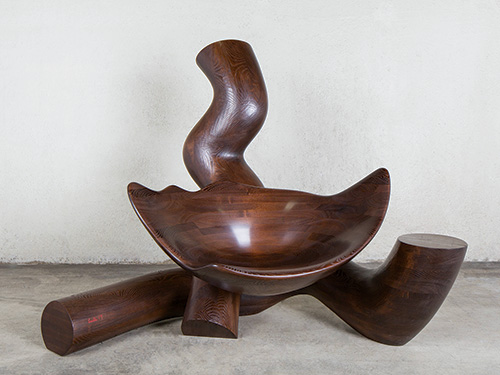
Wendell Castle, a founder of the studio furniture movement, passed away in 2018, but his legacy is getting a boost this year with the opening of the Wendell Castle Workshop in his longtime studio.
After Castle’s death, says Ken Page, interim director of the nonprofit Wendell Castle Project, the family “wanted to have a school, they wanted to archive his works, and they wanted to have a museum.” Castle, known for organic forms and stacked laminations, “would call himself a designer and a sculptor,” Page says. Part of the school’s mission is “to pass on the legacy that Wendell had of excellent design.”
Several Workshop instructors are former employees or students either of Castle or his students. (Castle ran a school from the studio in the 1980s.) Page describes this as “keeping the DNA of the place alive.” For instance, former Castle apprentice Silas Kopf taught a sold-out marquetry workshop last spring, while 17-year employee Taeyoul Ryu will teach two stack lamination workshops in the fall.
Learn Castle’s Techniques, Use His Tools

When Castle began making stacked laminations, “his first tool for carving was a chainsaw,” Page says. Students in a weeklong class will carve sculptural items with electric chainsaws, “whereas the weekend class is going to be the way Wendell did the stack lamination in the 2000s and the ’90s, which is making his model, scanning it into the computer, having the computer divide the model up into layers digitally and the computer printing off those templates.”
Students in the five-day course will receive pre-made templates to cut on the band saw, while the weekend class will review the digital process and tools needed. “The way Wendell did it for the carving was he had a robot,” Page says. “People aren’t going to buy a $150,000 robot, but we’re certainly going to demonstrate it.”
The school’s students will, however, have the chance to try some of Castle’s tools. “I was not going to do that, (but) Wendell’s widow was insisting on it,” Page says. Students will be able to borrow Castle’s tools from the classroom’s instructor bench to try them out.
Most of the power equipment in the Workshop was also used by Castle, with the exception of a new SawStop 5hp table saw, a Delta 20″ band saw and an additional horizontal slot mortiser. Those and additional power tools are split between two machine rooms.
While students will have access to the stock preparation room, normally Page says he will plane, joint and rough-cut wood to size ahead of time. Exceptions include a September beginning furniture class taught by Larissa Huff, in which students will prepare their own stock.
Archives of Inspiration

The Workshop also contains a room with 14 student benches Page built earlier this year. Most classes, however, will be limited to 10 to 12 students. Courses are targeted to a range of skill levels, including beginner, intermediate and advanced, with both weekend and week-long offerings. Lodging is available in Rochester, New York, 10 miles north of the studio’s Scottsville location.
Currently, the school is taking up 5,000 sq ft of the 15,000-sq-ft studio, a former bean mill that once served as home to Castle, wife Nancy Jurs and their children. A gallery provides inspiration to students by showcasing both Castle’s works and ceramic pieces by Jurs. A “Great Room” area will eventually become an event space and museum, while the Wendell Castle Archive will also be housed in the building.

“He drew every day from his 20s into his 80s,” Page says. “So there are thousands and thousands of drawings that he’s created and then models that he made for his work.” The Wendell Castle Project owns at least 100 of Castle’s foot-square models.
Also located on the campus are a former railroad station that is currently Jurs’s ceramic studio and a metalworking building. The school may add ceramics and metalworking courses in the future.
Right now, the studio also occasionally houses Castle pieces sent in for repair and a few pieces whose completion he had approved prior to his death. “Those are literally being final-sanded and finish put on them at this point,” Page says.
“The magic is here,” he adds. “The space itself is where Wendell actually designed and created his different masterpieces.”
For more information, visit wendellcastleworkshop.org.





